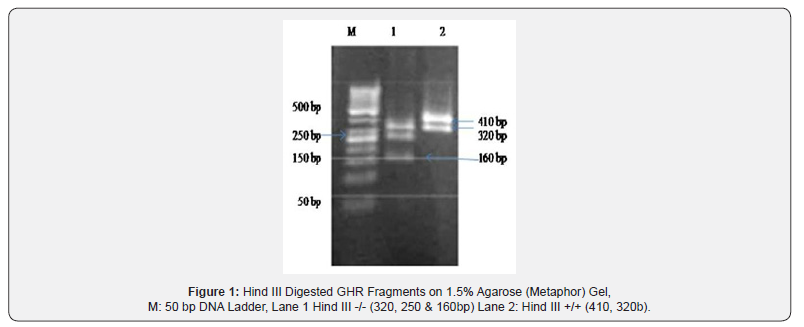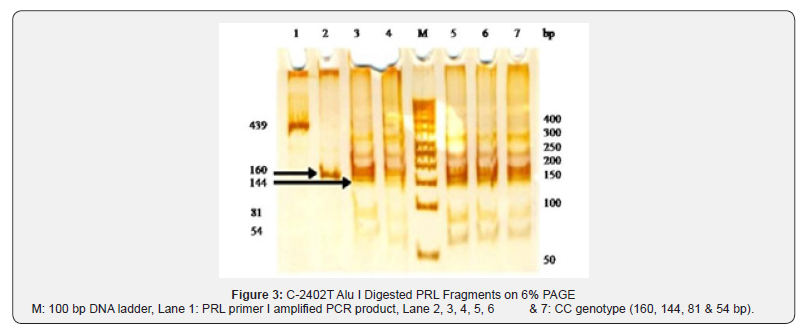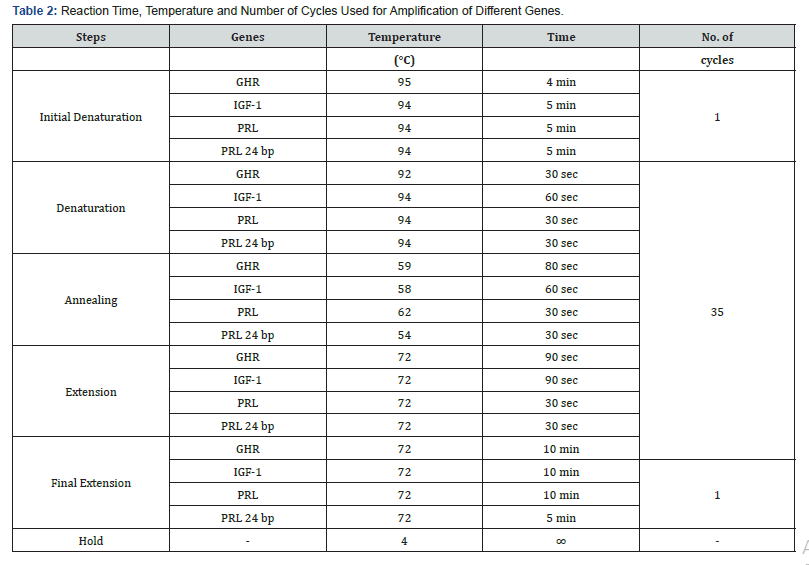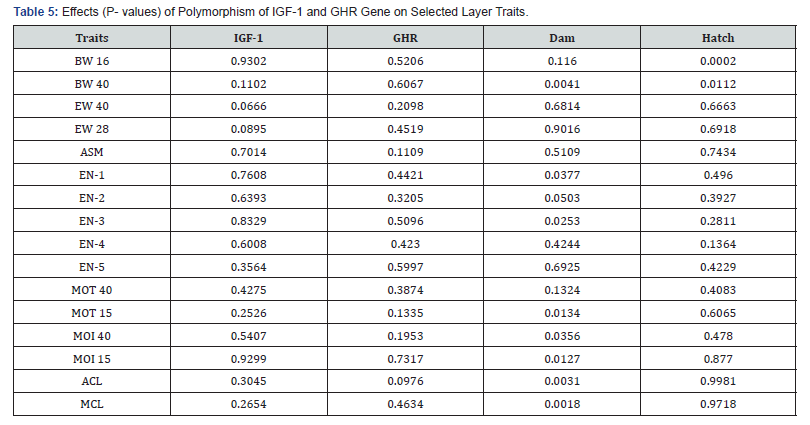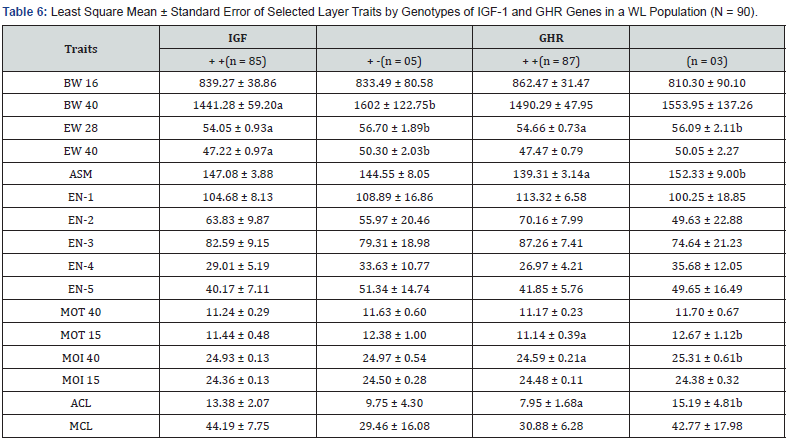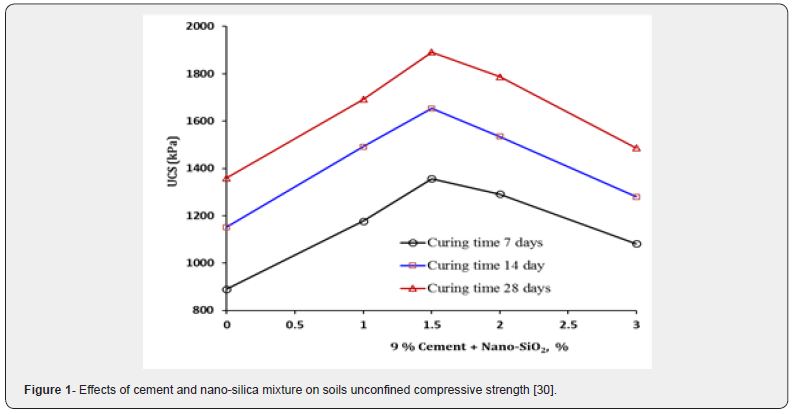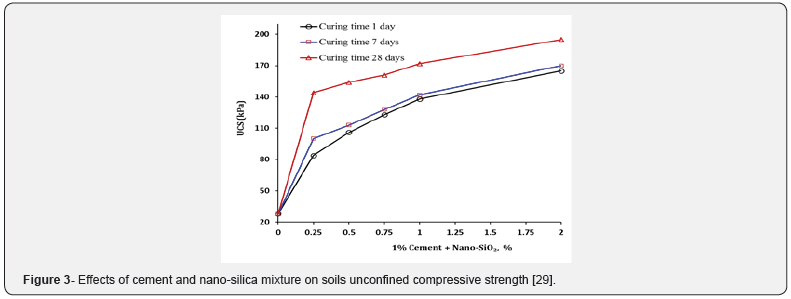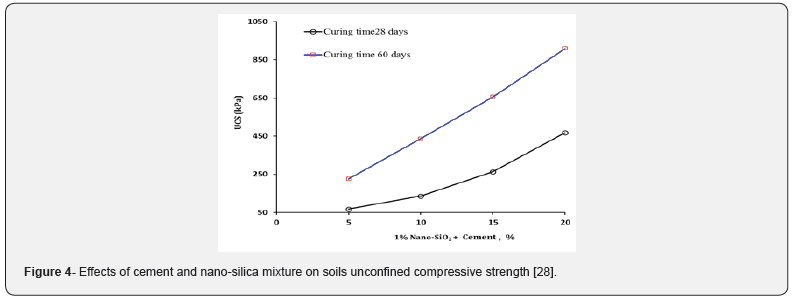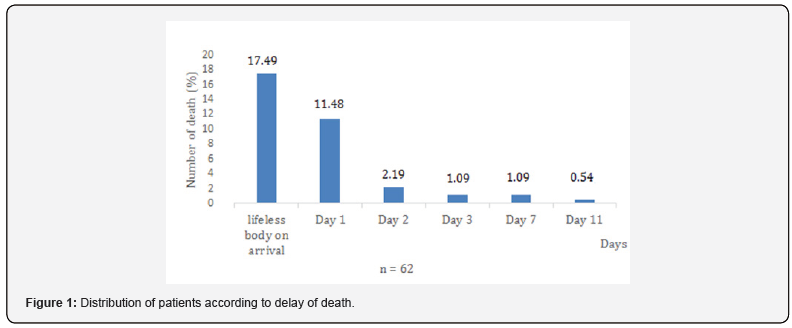Mining Science & Technology - Juniper Publishers

Magnetizing reduction is an important pre-treatment
process used for low-grade iron ores which are difficult to upgrade by
conventional beneficiation techniques. In present study, magnetizing
reduction of a low-grade iron ore has been carried out followed by
magnetic separation of iron minerals to produce iron concentrate. A
potential process has been developed for magnetizing reduction of
hematite into magnetite with domestic lignite coal. The experiments were
carried out in Muffle furnace under controlled temperature conditions.
The main process variables such as particle size of ore, ore to coal
consumption ratio, reduction temperature and retention time were
investigated to determine the extent of magnetizing reduction. In second
step, reduced iron ore was subjected to low intensity magnetic
separation to recover iron values in the magnetic concentrate. A
single-factor variation method was applied in order to get the optimum
conditions of the process. The results of bench scale experimental study
showed that the maximum grade and recovery of iron concentrate was
achieved at ore size of 90-95% minus 200 mesh, ore to coal consumption
ratio of 1: 0.25, the reduction temperature of 700°C and the retention
time of about 60 minutes. The ore containing 33.95% Fe was upgraded to a
concentrate assaying 64.13% Fe with 83.70% recovery. The iron
concentrate produced meets the specifications of metallurgical grade and
is suitable for use as a feed for blast furnace and other direct
reduction methods.
Keywords:
Low-grade iron ore; Beneficiation; Magnetizing reduction; Low intensity
magnetic separation; Iron concentrate; Hematite; Magnetite;
Metallurgical grade; Recovery
Conventionally iron and steel is produced by the
reduction of high-grade iron ores in a blast furnace. About 80% of the
world’s iron making is achieved through the blast furnace process and
rest by different direct reduction (DR) processes. The role of
high-quality iron ore and concentrate as a raw material is very critical
to get the best quality iron and steel [1]. The high-grade iron ores or
concentrate should contain at least 60% iron (Fe) content with maximum
up to 7% silica (SiO2) content [2]. The product of blast
furnace is a pig iron which is then converted into steel by various
techniques [3]. The quality of raw materials used in blast furnace plays
an important role in steelmaking process.
The iron ores available at different areas of
Pakistan are generally low-grade with high silica content. These ores as
such cannot be utilized to produce iron and steel by conventional blast
furnace technique or DRI processes. The first step in iron making
involves the separation of iron minerals from low-grade iron ores. There
are three basic methods for separation of iron minerals i.e., magnetic
separation, froth flotation and gravity concentration [4]. The iron
concentrate produced by any processing method is used for producing iron
metal either by blast furnace or direct reduction methods [5]. The fine
iron concentrate is to be palletized or sintered for both routes [6].
Magnetic separation is most used to separate natural
magnetic iron ore (magnetite) from a variety of less magnetic or
nonmagnetic material [7]. Magnetizing reduction is one of the most
effective unit operations in the treatment of low-grade iron ores
specially those which are poorly responsive to conventional
beneficiation techniques such as froth flotation, gravity separation and
magnetic separation [8,9]. It involves the conversion of feebly
magnetic iron minerals in the ore to the strongly magnetic form by
subjecting the ore to a reducing atmosphere at elevated temperatures.
The resulting artificial magnetite is strongly magnetic and can be
separated from the non-magnetic gangue by low-intensity magnetic
separation. Many weakly magnetic minerals can be converted to more
strongly magnetic compounds by magnetizing reduction processes [10-12].
Geological Survey of Pakistan (GSP) during regional
survey in 1989 discovered iron ore deposits near Chiniot town and
adjoining areas such as Rajoa, Chak Jhumra, Wad Syedan, Ghutti Syedan,
Shaheen Abad, Sargodha and Sangla Hills etc. Subsequently, the Punjab
Mineral Development Corporation (PUNJMIN) carried out detailed
exploration in year 2005 to 2007. As a result of exploration work,
anomalous zones containing iron ore and other associated metallic
minerals have been confirmed in Chiniot with strong indications in
Rajoa. The other metallic mineral resources including copper, gold,
nickel, cobalt etc. are also found in the underlying sulphide zone
associated with the iron ore. Around 150 million tons of good quality
iron ore reserves had been identified in Chiniot. The field survey based
on the cores recovered from several drill holes of the ore body has
shown that the ore occurs in bands ranging from one meter to several
meters in thickness. The Chiniot iron ore is predominantly oxide ore
containing variable amount of hematite and magnetite as principal iron
bearing minerals. The ore is massive, low to medium grade containing as
low as 30 Fe2O3 to as high as 70 Fe2O3. The resources are buried under alluvium, aquifers and hosted in the subsurface volcanogenic rocks [13].
With ever rising steel prices, the local
manufacturing of steel based on indigenous reserves of iron-ore is
critical. The main problems in utilization of indigenous iron ore is
up-gradation and beneficiation of available resources. Development of
domestic technologies for utilization of indigenous iron ore will not
only reduce the dependence of steel production on imported raw material,
but it will also result in lowering the steel price. Present
beneficiation studies are oriented towards exploring the possibilities
of upgrading Chiniot iron ore to produce iron concentrate for
utilization as a feed in conventional blast furnace or direct reduction
method to produce iron and steel.
The core samples of seven drill holes of Chiniot iron
ore weighing about 40kg were received for beneficiation studies. The
drill cores were crushed in laboratory jaw crusher (set at 20mm)
followed by roll crusher (set at 5mm) for size reduction. Riffling
technique of sampling was used to prepare the head sample for chemical
analysis. The head sample was pulverized to 100% minus 200 mesh (74µm)
in disc pulverizer (Denver, USA). The crushed ore was split into 1kg
samples and kept in plastic zipper bags for R& D work. These ore
samples were ground in rod mill for magnetizing reduction and magnetic
separation tests.
The chemical analysis of head sample of iron ore
originating from Chiniot area was carried out by standard wet analytical
methods and atomic absorption spectrometer. Ore was fused with sodium
carbonate and sample solution was made in dilute HCl. Silica, alumina,
and sulphur were determined gravimetrically while iron was determined by
oxidation reduction titration. Calcium and magnesium were determined by
complexometric titration using standard solution of EDTA. Sodium and
potassium were determined by flame photometer (PFP7, Jenway Limited,
England). Loss on ignition (LOI) was determined at 1000oC. The complete chemical analysis of head sample of Chiniot iron ore is shown in Table 1.
Magnetizing reduction tests were carried out on
ground ore using locally available lignite to sub-bituminous coal used
as reducing agent. The pulverized coal sample used has 2.45% moisture,
37.79% ash content, 35.20% fixed carbon, 24.56% volatile matter, 5.86%
sulphur and its gross calorific value of coal was 6150 Btu/lb. Known
weight and sizes of ground ore and coal were mixed in different
composition. These were placed in porcelain crucibles (100ml capacity)
and covered with lid. These were heated by gradually by raising the
temperature with increment of 100°C per 30 min in electric (muffle)
furnace to desired temperature and then maintaining it for magnetizing
reduction of hematite into magnetite. The crucibles were removed after
keeping them at different temperature for different time interval. Runs
were conducted on 50g ore charged. The ore to coal ratio was studied
from 1: 0.1 to 1: 0.30, the reduction temperature was ranged from 500 to
800°C, the residence time was varied between 30 min to 120 min and the
particle size of ore was varied from 90-95% passing 100 mesh to 250
mesh.
The reduced ore (feed) was subjected to wet low
intensity rotary drum magnetic separator (Sala, Italy) having permanent
magnets for separation of magnetic minerals form associated gangue
minerals. The drum dimensions were 200 mm dia × 100 mm width. The
intensity of magnetic field (strength) was set at 1000 gauss. Tests were
conducted at feed rate of 10-15 kg/hr, wash water flow rate of 20-25
l/hr and number of operations (passes) 2. The magnetic (concentrate) and
non- magnetic (tailings) portions were collected separately, dewatered
and oven dried. The dried concentrate and tailings were weighed and
chemically analyzed for total iron content. The results of magnetic
separation tests are given in Table 2. The flowsheet developed for the
process is given in Figure 1. The images of the crushed sample, ground
head sample, ground lignite coal and reduced magnetic concentrate are
shown in Figure 2.
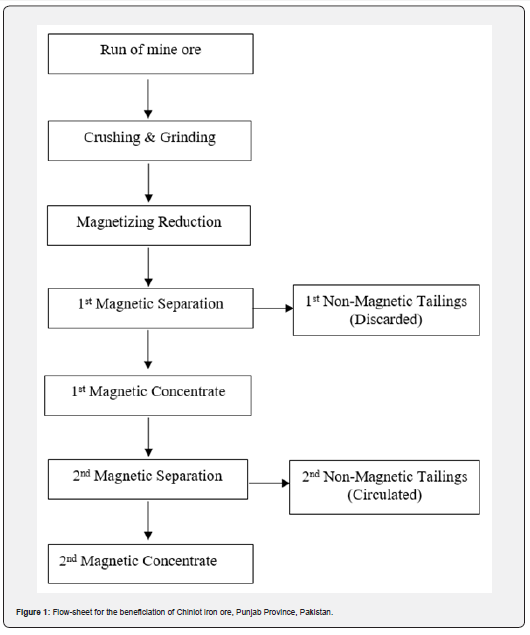
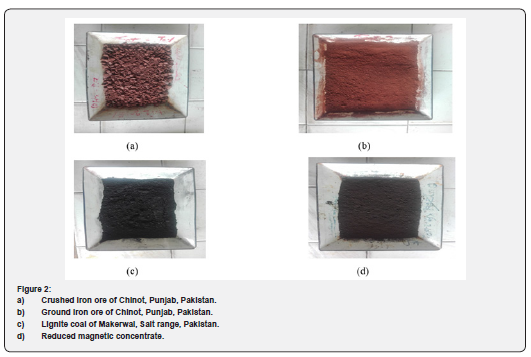
The chemical analysis of head sample (Table 1)
indicates that ore contains 33.95% total Fe. The main impurity is silica
being 36.25% which is more than the permissible limit required for iron
and steel production. The level of other impurities is not very high
except sodium oxide and potassium oxide. These impurities are present
due to the occurrence of cerecite and feldspar in the ore. The iron
mineralization varies from massive over 70% Fe2O3 through medium 50% Fe2O3 to low grade 30% Fe2O3.
The iron minerals occur as hematite and magnetite. The hematite to
magnetite ratio varied from 1. 3:1 to 2.0:1. The ore is hard, tough and
compact. As hematite is a weekly paramagnetic mineral, while the other
minerals present in the ore are diamagnetic in nature. It was decided,
in this perspective, to convert hematite into magnetite followed by low
intensity magnetic separation technique which has the potential to
recover the iron values and reduce the siliceous gangue minerals
effectively [14].
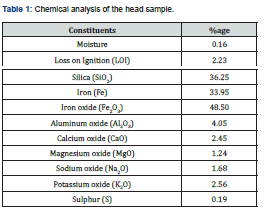
The particle sizes worked at were almost 90-95% passing 100 mesh (150µm), 150 mesh (100µm), 200 mesh (75µm) and 250 mesh (65µm)
for magnetizing reduction study keeping other factors constant. The
results of beneficiation tests (Figure 3) showed that although some
up-gradation has been affected at coarse size. However, the concentrates
were high in silica content showing thereby that it is locked within
iron oxide particles. It was thought essential to grind the ores to
finer size. It was observed that the samples ground to 90-95% passing
200 mesh responded most favorably to magnetic separation. The
magnetizing reduction followed by magnetic separation results showed
that as the particle size of feed was reduced from 90-95% passing 100
mesh through 150 mesh to 200 mesh, the grade was improved gradually from
52.45% Fe through 58.90% Fe to 61.05% Fe with slight decrease in
recovery of total iron content of concentrate from 87.12% through 85.03%
to 84.72%. However, after that both grade (58.23%) and recovery
(80.31%) were dropped sharply probably due to finer particle size of
ore.
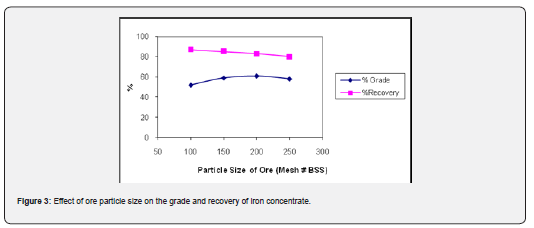
Temperature has a significant effect on magnetizing
reduction process. It plays an important role in the phase change of
hematite and limonite during magnetizing reduction [15]. The iron ore
samples of 90-95% passing 200 mesh size were subjected to magnetizing
reduction with excess of coal (30%) at 500°C, 600°C, 700°C and 800°C for
60 min to study the effect temperature on the magnetizing reduction of
iron ore. The reduced samples were separated, and magnetic fractions
were subjected to chemical analysis to determine the iron content. The
results obtained are shown in Figure 4. It is clear from this figure
that iron grade and recovery in the magnetic fraction exhibits a gradual
increase with rise in reduction temperature and reaches at maximum
value 62.31% Fe with 82.75% recovery at the onset of reduction
temperature of 700°C and then slowly declines. It is since as the
temperature is raised between 200 to 700°C the carbon in the form of
coal burns to produce carbon monoxide.
2 C(s) + O2(g) → 2 CO(g)
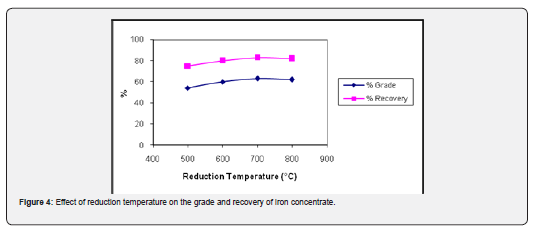
The hot carbon monoxide is the reducing agent for the iron ore and reacts with the hematite iron oxide Fe2O3 (III) to produce magnetite iron oxide Fe3O4 (II) and carbon dioxide.
3 Fe2O3(s) + CO(g) → 2 Fe3O4(s) + CO2(g)
The hot carbon dioxide formed in this process is re-reduced to carbon monoxide by further reaction with the coal.
C(s) + CO2(g) → 2 CO (g)
As the temperature is further increased beyond 700°C,
most of the coal is consumed away and some of freshly converted
magnetite present on the surface is re-oxidized to hematite by air which
lowers the recovery rate during magnetic separation [16].
The effect of reduction time was investigated by
varying it from 15 to 75 minutes with increment of 15 min and keeping
other parameters constant at feed size of 90-95% passing 200 mesh size,
the reduction temperature of 700°C and ore to coal ratio of 1: 0.30. It
is obvious from the result (Figure 5) that iron grade and recovery in
the magnetic fraction increases gradually in the beginning and then
represents a sharp increase (63.45% Fe with 82.93%) at the onset of
reduction time of 60min and then decreases with increase in reduction
time. It is observed that when the reduction time was extended from
60min, the magnetic properties of the reduced ore were decreased (Figure
2). The prolonged reduction time results in excessive reduction and
waste of energy resources. Also, when the reduction time is less than
60min, insufficient reduction occurs leading to lower metallurgical
results [17].

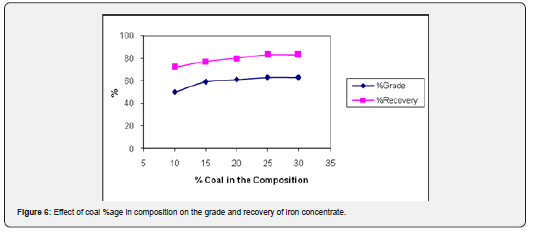
The effect of coal as reducing agent on the reduction
of hematite to magnetite was investigated by varying the ratio of ore
to coal from 1: 0.10 to 1: 0.30 in the charge at a temperature of 700°C
for 60 min using the particle size of 90-95% minus 200 mesh size. The
coal carbon burns as the temperature is increased and reducing gases
such as carbon monoxide are formed that initiate the reduction of
hematite into magnetite. As a result, this reaction, conversion of
hematite into magnetite takes place [18,19]. The results obtained
(Figure 6) show that the metallurgical performance (grade and recovery)
of magnetizing reduction is improved and reaches its highest value of
64.13% Fe with 83.70% recovery as the ratio of coal in the ore was
increased up to 1: 0.25 in the charge. Further increase seems to be
insignificant as it does not improve the results.
Low-intensity magnetic separators use magnetic fields
between 1,000 and 3,000 gausses [20]. Low-intensity magnetic separation
techniques are normally used on magnetite ore as an inexpensive and
effective separation method. This method is used to capture only highly
magnetic material, such as magnetite. High-intensity separators employ
fields as strong as 20,000 gausses. This method is used to separate
weakly magnetic iron minerals, such as hematite, ilmenite, rutile,
siderite, chromite, wolframite, pyrrhotite, monazite from non-magnetic
or less magnetic gangue material [21-25]. The preliminary direct
low-intensity magnetic separation tests showed that ore contain mainly
hematite as iron bearing mineral as only 25 to 35% of total iron (Fe)
corresponding to magnetite was recovered by low-intensity magnetic
separation. Between 30 to 35% of all the iron units being beneficiated
are lost to tailings because hematite is only weakly magnetic.
The optimum conditions of magnetizing reduction
parameters (Table 2) depict that when the crude ore grade is 33.95% Fe,
the mass percent of pulverized coal as reducing agent is 25%, reduction
temperature is 700℃, reduction time is 60 min and particle size is
90-95% passing 200 mesh # (0.074mm). The iron concentrate can be got
after a low-intensity magnetic separation, whose grade is 64.13% Fe and
recovery is 83.70%.

The metallurgical balance (Table 3) shows that Chinot
iron ore is amenable to beneficiation using low-intensity magnetic
separation after magnetizing reduction technique. The magnetizing
reduction trials of iron ore followed by magnetic separation has
indicated that the ore has been concentrated to 64.13% Fe grade with
83.70% recovery starting from a crude ore assaying 33.95% Fe. The silica
content is greatly affected by the magnetizing reduction treatment
where it decreases from 36.25% in the ore to 4.38% in the magnetic
portion. Magnetizing-reduction has been found an efficient technique for
the recovery of values from this ore with acceptable recovery. The
developed process is low energy consuming, cost effective and
convenient.

The chemical analysis of final concentrate (Table 4)
reveals that after beneficiation, iron content (Fe) has been increased
significantly from 33.95% to 64.13% with decrease in amount of silica
(SiO2) from 36.25% to 4.38%. The prepared iron concentrate
having iron and silica in this range is considered suitable for the
preparation of iron and steel by Blast Furnace and alternative iron
making processes such as SL/RN, Krupp-Renn, Midrex, Corex, Hyl, Romelt,
Hismelt, Ausmelt, Dios etc. [26]. There is a quite variation in
selection of feed for different processes. The reducing agents may be
gas or solid or both fuels. The charge may be lumps, screen size, fines,
pellets, sinter, agglomerate or briquettes. The quality of iron ore or
concentrate is key parameter in the selection of process. Some rotary
kiln processes such as (Krupp-Renn/ SL/RN) can use lower grade iron ores
(Fe 50%) while other process require high grade iron ore having more
than 65% Fe content such as Midrex process. The product of DR processes
is sponge iron which is converted into steel [27].

The quality of high-grade iron ore or concentrate
made from low grade ore has a significant effect on the efficiency and
economy of blast furnace. The various impurities present in iron ore in
the forms of silica, alumina, alkalis, phosphorus and sulphur behave
differently during smelting and adversely affects the performance and
economy of blast furnaces. The presence of phosphorus and sulphur
increases surface cracking during steel processing. The acceptable
levels of phosphorous (P) vary from 0.08 to 0.14%, while sulphur (S) is
up to 0.06% in hot metal. High alkali (Na2O & K2O)
contents lower the mechanical strength of coke and sinter, imbalance
the furnace operation, reduce the furnace productivity and damage the
lining. The desired levels of alkalis are 0.4% of hot metal. The
increase in silica (SiO2) content leads to the generation of
more siliceous slag with high viscosity, consumes more limestone or
dolomite. The desired level of silicon (Si) in the steel is 0.6%. High
alumina (Al2O3) decreases the fluidity of slag,
and more coke is required to increase the fluidity. It has been reported
that reduction of the alumina content in iron ore by 1% improves blast
furnace performance by 3%, reduces reduction degradation index (RDI) by 6
points, lowers the coke rate by 14 kg per ton of hot metal and
increases sinter productivity by 10-15%. The high iron (Fe) content and
low impurities contents in iron ore are highly desired in the blast
furnace operations and economy. Different steel plants have varied
quality requirements based on the techniques and process adopted.
Specifications of a typical iron ores required by steel plants for iron
making are as Fe 60-67%, SiO2 1-6%, and Al2O3
3- 4%. The values of these constituents in the iron concentrate
prepared from Chinot iron ore lies well within the acceptable limits
[28,29].
The results of the experimental study showed that the
quality of Chiniot iron ores can be greatly improved by subjecting to
magnetizing reduction followed by magnetic separation technique. A great
deal of impurities is removed, and the iron content is significantly
increased. The ore concentrate obtained is high-grade material suitable
for direct use as a feed to produce iron and steel in number of
processes. The results reported show that it is possible to upgrade low
grade iron ore of Chiniot area by magnetizing reduction followed by low
intensity dry magnetic separation technique to produce iron concentrates
of metallurgical grade with acceptable recovery. The SiO2
content was reduced remarkably from 36.25% to 4.38%. The iron contents
were upgraded significantly from 33.95% to 64.13% at recovery of 83.70%.
The final concentrate produced meets all the specifications of the
metallurgical grade iron concentrate and can be directly used to produce
iron and steel after palletizing. The advantage of this technique is
that it is easy to operate, less expensive and environment friendly.
To Know more about Mining Science & Technology
Click here: https://juniperpublishers.com/index.php



